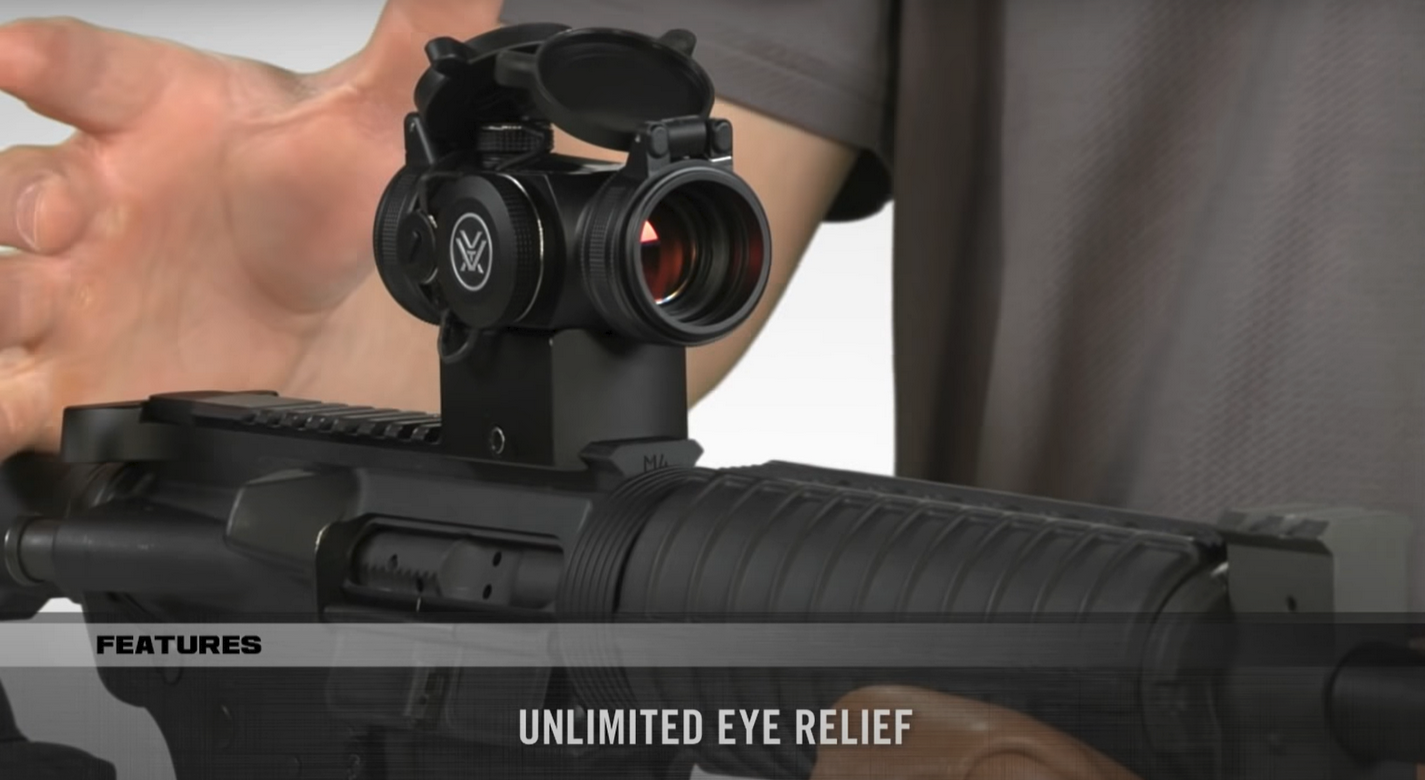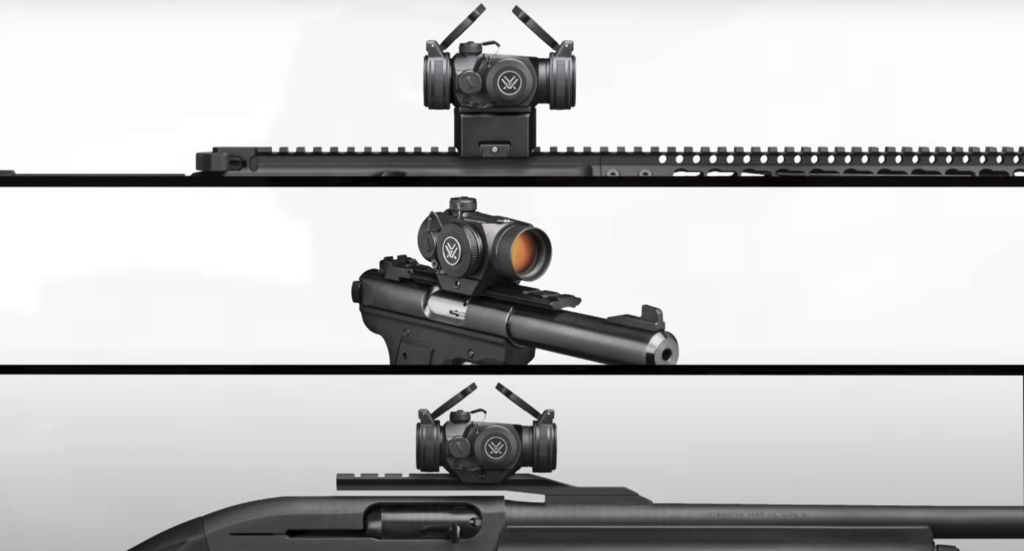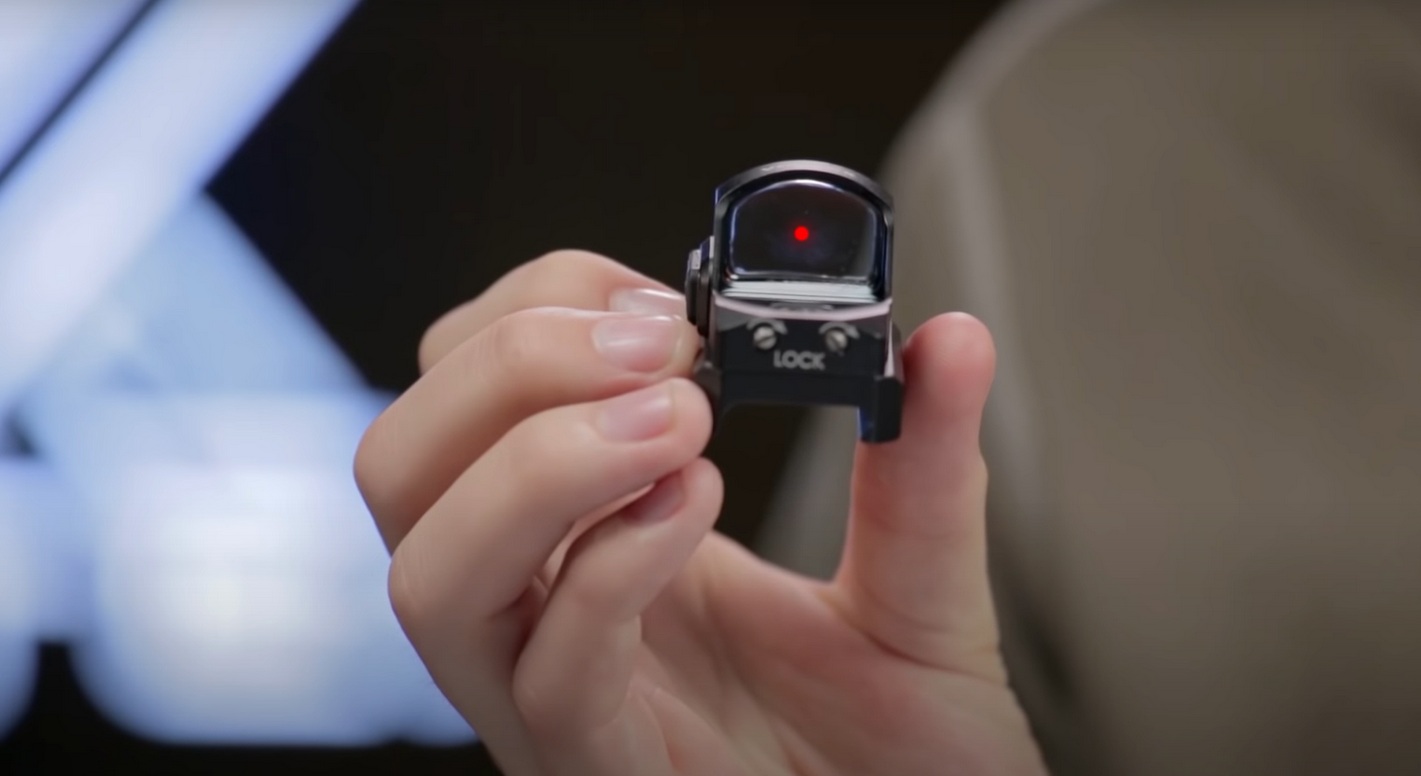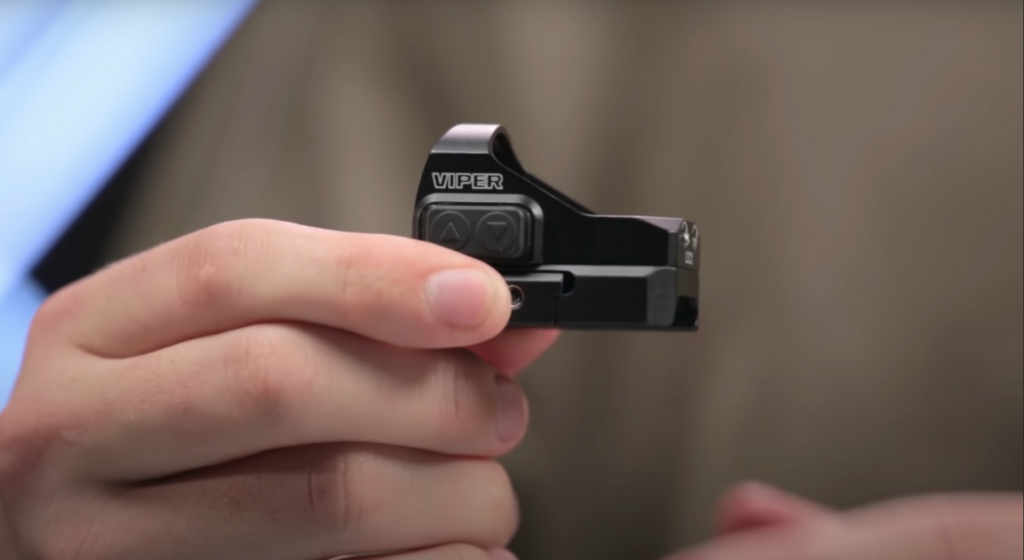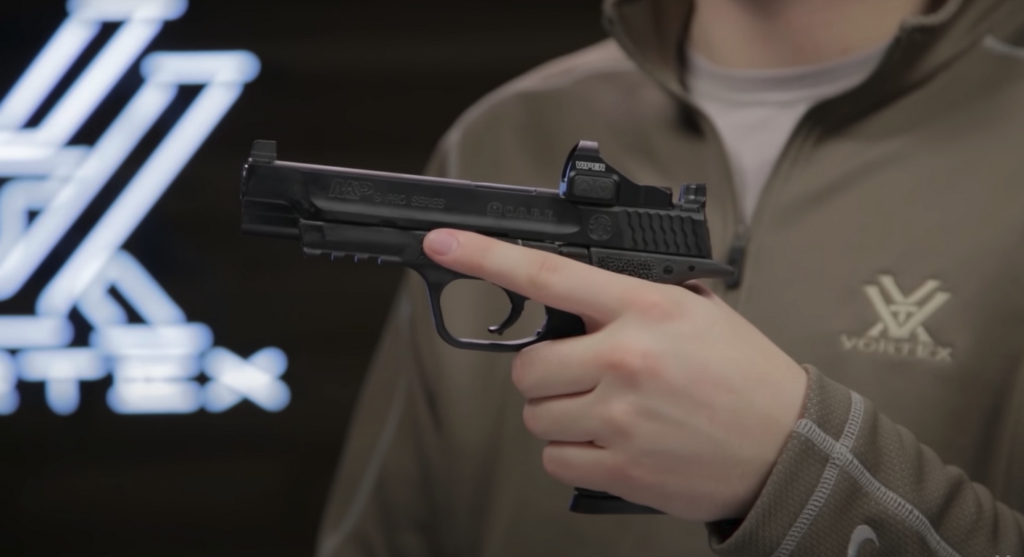In the world of firearm optics, the distinction between a reflex sight and a red dot sight often eludes most individuals. Yet, this knowledge gap is not exclusive to you, dear reader. The purpose here is to delve into the realm of reflex sights and red dot sights, unraveling their intricacies for your enlightenment.
Introduction to Red Dot Sights
Let us commence by demystifying the term “red dot sight.” This nomenclature is, in essence, an umbrella term encompassing a diverse range of sighting devices united by their employment of a red dot for target acquisition. Imagine it as a category wherein prism sights, reflex sights, and holographic sights all find their place. While their operational characteristics and structures may vary, they share a common thread—the red dot.
Therefore, any aiming apparatus employing a red dot for target alignment can be classified under the broad banner of “red dot sight.” This category is inclusive, embracing various designs and functionalities.
Our Top 3 Red Dot Sights
1. Bushnell Red Dot Sight
- The Bushnell Red Dot Sight stands out for its lightweight and compact design. This feature is particularly advantageous for shooters seeking a nimble and maneuverable optic;
- It offers unlimited eye relief, ensuring that users can maintain a comfortable shooting position without straining their eyes or compromising accuracy;
- In low-light conditions, a critical factor in many shooting scenarios, this sight excels. Its performance in such conditions allows shooters to maintain target visibility even during dusk or dawn;
- This red dot sight includes a mount, simplifying the installation process and saving users the hassle of searching for compatible mounts separately;
- Its wide field of view is a boon, enabling users to quickly acquire and track targets across a broader area. This characteristic is particularly valuable in fast-paced shooting situations, such as competitive shooting or tactical engagements.
2. Vortex Optics Strikefire II
- The Vortex Optics Strikefire II offers a 1x magnification, providing a true one-to-one view of the target. This feature is ideal for close-quarters shooting and rapid target acquisition;
- Its remarkable battery life ensures extended usage without frequent battery replacements. The included battery further simplifies setup, allowing users to get started right away;
- The sight boasts a solid and durable construction, designed to withstand the rigors of outdoor use and adverse conditions;
- Unlimited eye relief is another standout feature, enabling shooters to maintain flexibility in their eye positioning without sacrificing accuracy;
- Its large, multi-coated lens enhances clarity and light transmission, resulting in a bright and sharp sight picture. The wide field of view aids in tracking moving targets, making it a popular choice for dynamic shooting scenarios.
3. Trijicon RMR 6.5 MOA
- Featuring a 6.5 MOA LED with 1 MOA per click adjustments, the Trijicon RMR offers precise control over dot size and placement, catering to shooters’ preferences and requirements;
- The sight’s brightness settings are adjustable with multiple options, ensuring optimal visibility in various lighting conditions, from bright daylight to low-light settings;
- It is equipped with a multi-coated lens that enhances image quality, clarity, and contrast while minimizing glare and reflections;
- Like its counterparts, the Trijicon RMR is battery-powered, and an included battery simplifies setup, allowing shooters to hit the range or field without delay;
- Operating this sight is user-friendly, making it accessible to both novice and experienced shooters alike, an important feature in high-stress shooting scenarios.
These red dot sights offer distinct advantages and features, catering to a range of shooting styles and preferences. Whether you prioritize lightweight design, long battery life, or precise adjustments, these options provide valuable choices for enhancing your shooting experience.
Introduction to Reflex Sights
Now, turning our attention to reflex sights, it must be conceded that distinguishing them from red dot sights can be a formidable task without proper knowledge. Reflex and red dot sights are often mistaken for one another, primarily due to their similar appearance.
Yet, other types of sights, such as prism and holographic sights, boast distinctive physical characteristics. Reflex sights stand out in their operation. They employ a low-power LED light projected onto a lens, which then reflects the dot back to the user’s eye—hence, their alternative name, “reflect sights.”
These sights are renowned for their lightweight and compact tube design, housing all components internally. Additionally, they exhibit resilience in extreme conditions and come at an affordable price point. However, they do have limitations, most notably in parallax correction. Nevertheless, their extended battery life and unlimited eye relief make them a valuable asset for shooters, hunters, and law enforcement professionals.
Top 3 Reflex Sights
Budget Friendly: Ohuhu Reflex Sights
- The Ohuhu Reflex Sight distinguishes itself with its tubeless design, which contributes to a streamlined and lightweight profile, ideal for shooters seeking agility;
- It offers versatility with 4 reticle patterns and dot sizes, allowing users to tailor the sight to their specific shooting requirements, be it precision or rapid target acquisition;
- Featuring a built-in mount designed for standard bases, the installation process is simplified, eliminating the need for additional mounting accessories;
- Its objective lens, while fairly sized, provides a wide field of view, aiding in target tracking and situational awareness;
- The sight’s shockproof and waterproof construction ensures reliability in demanding environments, making it a reliable choice for outdoor enthusiasts;
- To kickstart your shooting experience, the Ohuhu Reflex Sight comes with an included battery, sparing you the initial expense.
Editor’s Choice: Feyachi Reflex Sight
- The Feyachi Reflex Sight offers a generous 42mm reflex lens aperture, allowing for rapid target acquisition by providing a wide sight picture and enhanced peripheral vision;
- Efficiency shines through its low power consumption, ensuring an extended battery life. Shooters can confidently engage in prolonged sessions without concern for frequent battery changes;
- Parallax correction and unlimited eye relief are integral to the Feyachi Reflex Sight, ensuring consistent accuracy regardless of the shooter’s eye position;
- Crafted from high-grade aluminum alloy, this sight is a testament to durability while maintaining a lightweight profile that won’t burden your firearm.
Also Great: Pinty Red Green Reflex Sight
- The Pinty Red Green Reflex Sight is designed to resist water, enhancing its suitability for wet or humid conditions and reinforcing its longevity;
- It exemplifies ultimate durability, capable of withstanding the harshest of outdoor challenges, making it a dependable choice for rugged adventures;
- Offering a remarkable 8 sighting options, shooters can select the reticle that best suits their shooting scenario, enhancing adaptability in the field;
- Featuring a Picatinny rail mount, it ensures a secure and stable attachment to your firearm, even under recoil or adverse conditions;
- Tools are included for ease of use, simplifying installation and adjustment, ensuring shooters can quickly get on target.
These reflex sights cater to different preferences and shooting needs, from affordability to quick target acquisition, durability, and adaptability. Selecting the right reflex sight can greatly enhance your shooting experience, whether you’re a casual shooter or a seasoned marksman.
Summary
In summation, a reflex sight and a red dot sight, though akin, are not interchangeable terms. A reflex sight qualifies as a subtype of red dot sight, along with prism and holographic sights. Their operational distinction lies in the utilization of LED light for dot projection, subsequently reflected into the user’s eye.
Pros:
- Lightweight and compact design;
- Extended battery life;
- Durability in various conditions;
- Affordable price point.
Cons:
- Limited parallax correction.
As you embark on your journey into the world of firearm optics, remember that the ideal choice hinges on what works best for you. Preferences vary, and what suits a friend may not align with your needs. So, explore, test, and select the sight that complements your shooting style. Your perfect firearm companion awaits discovery. With that, we conclude our enlightening session. We trust you’ve found our discourse beneficial, and we look forward to accompanying you on your future endeavors in the realm of firearm optics. Until then, farewell and safe shooting!
















